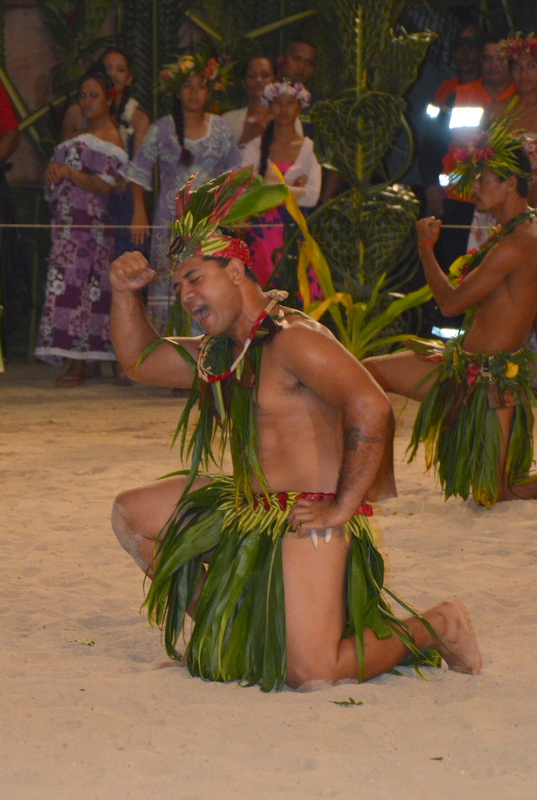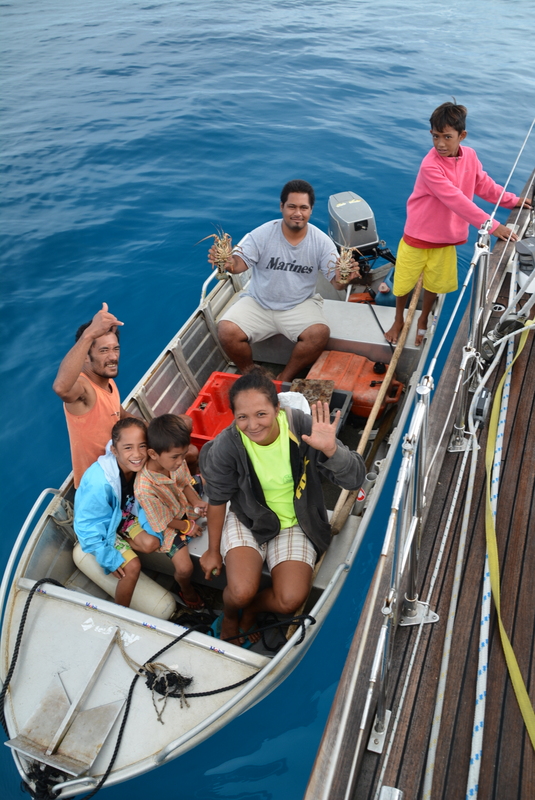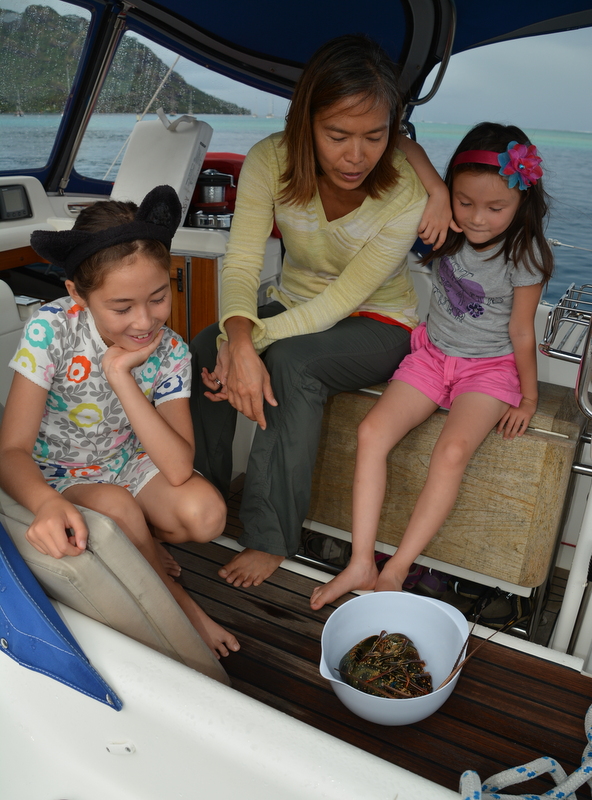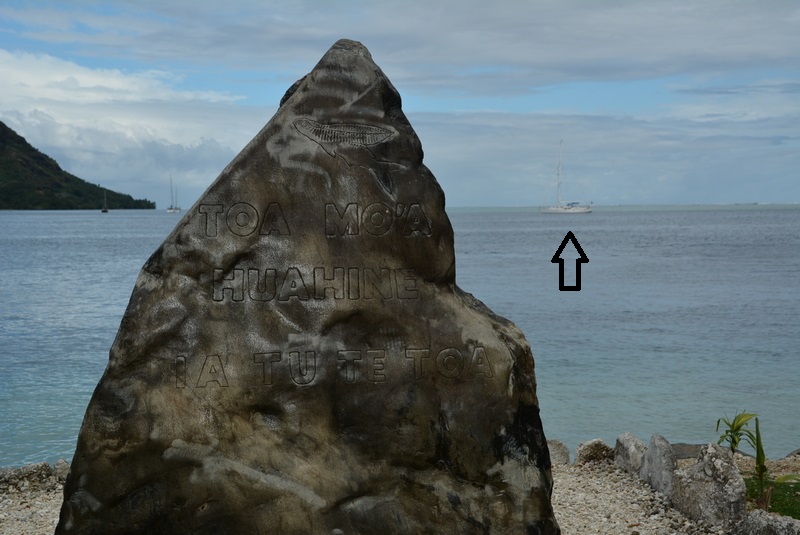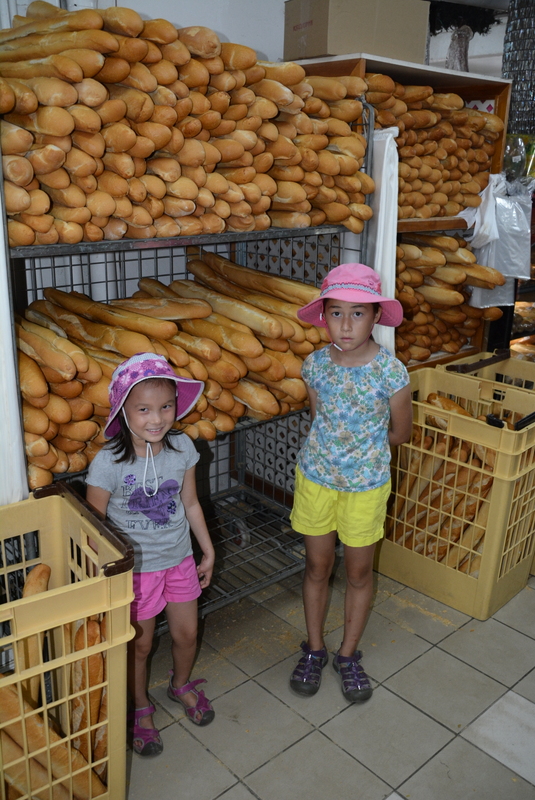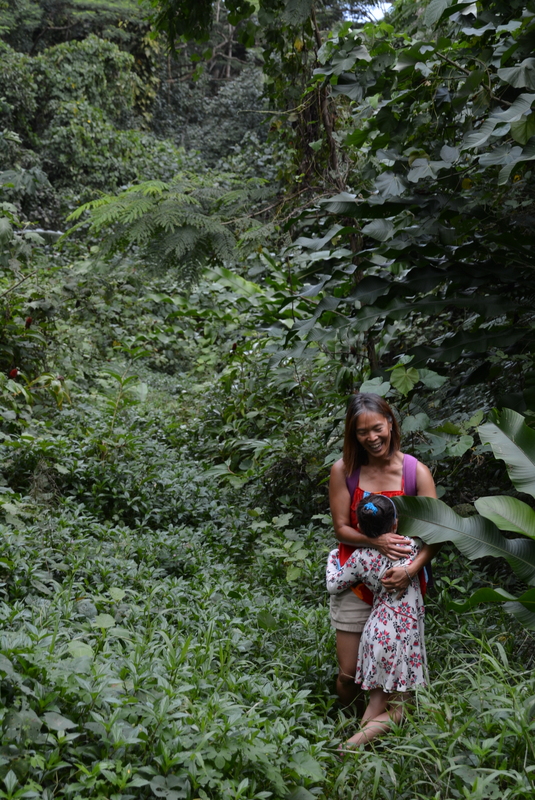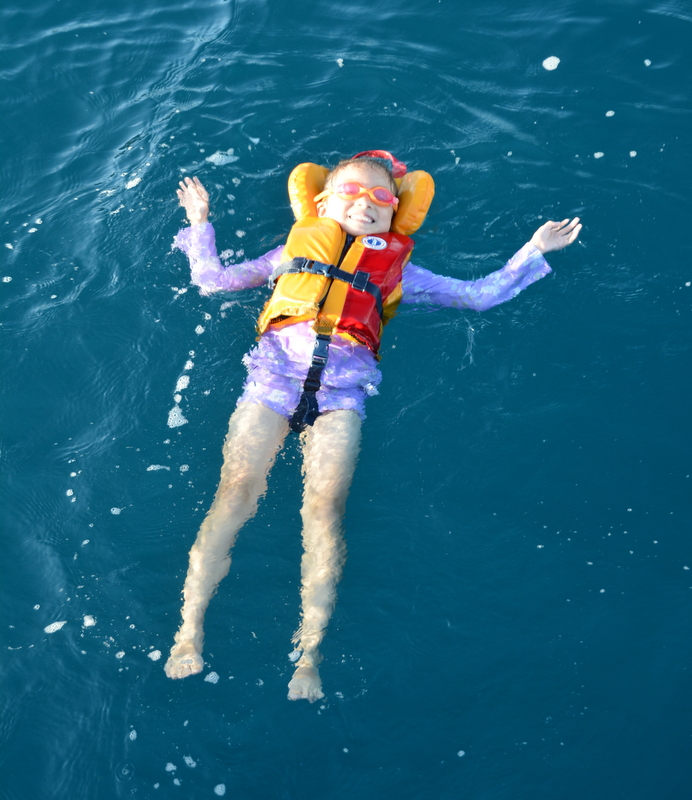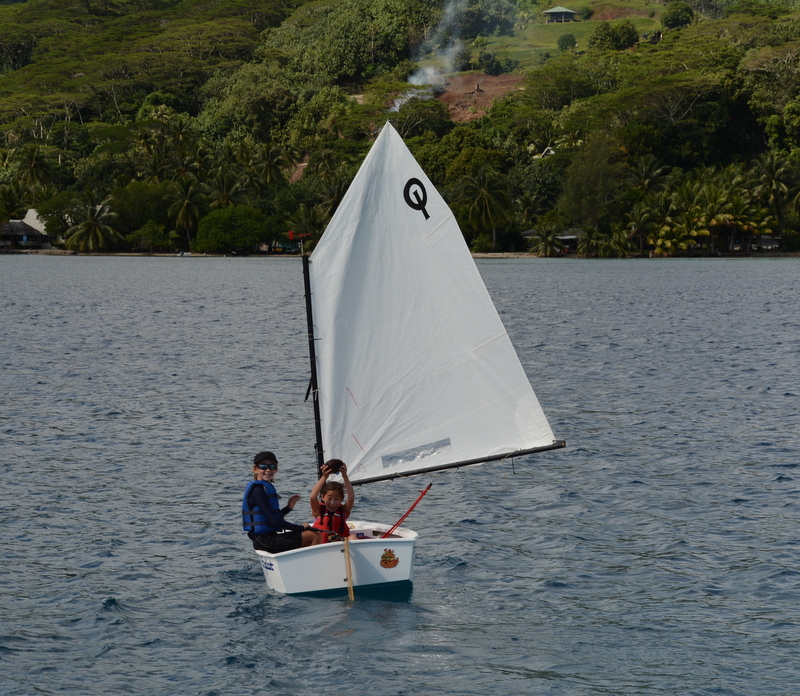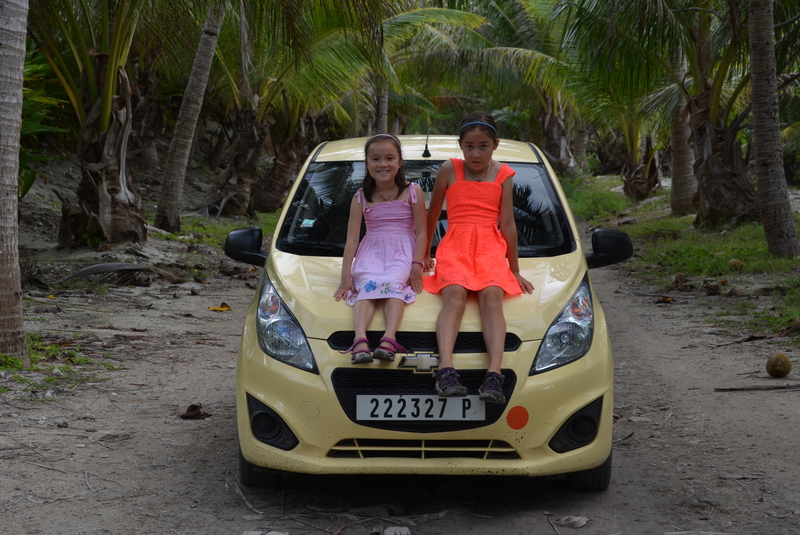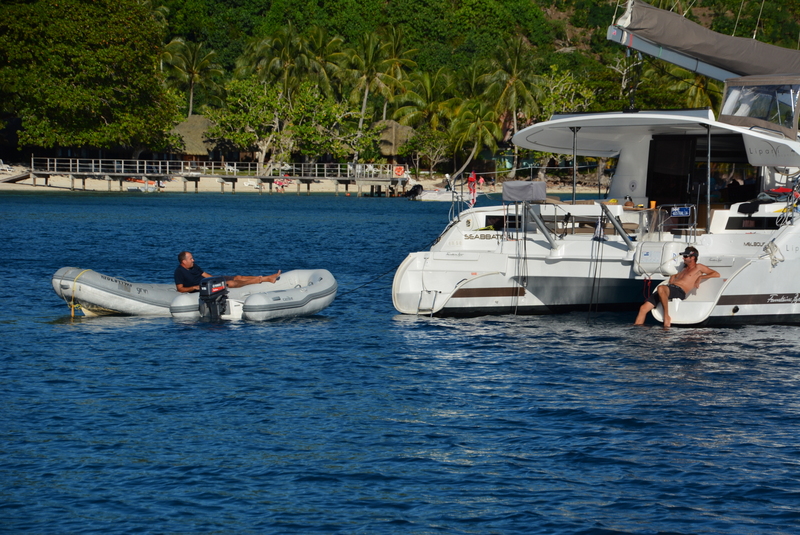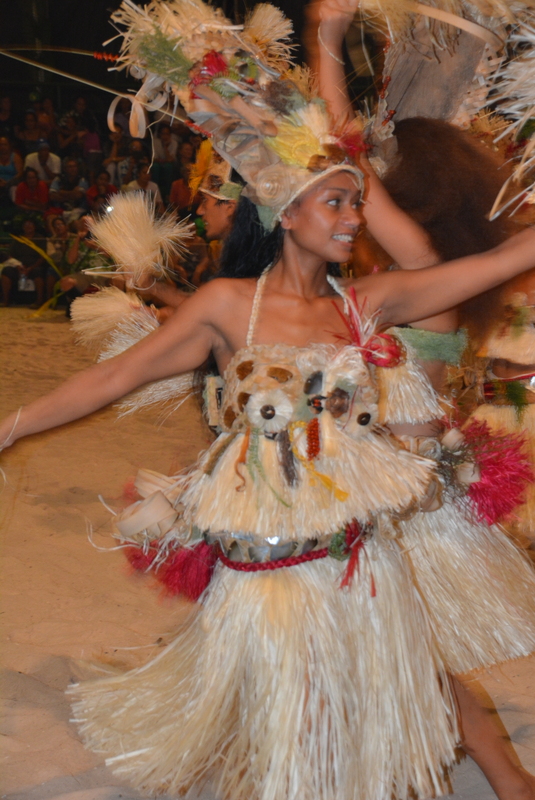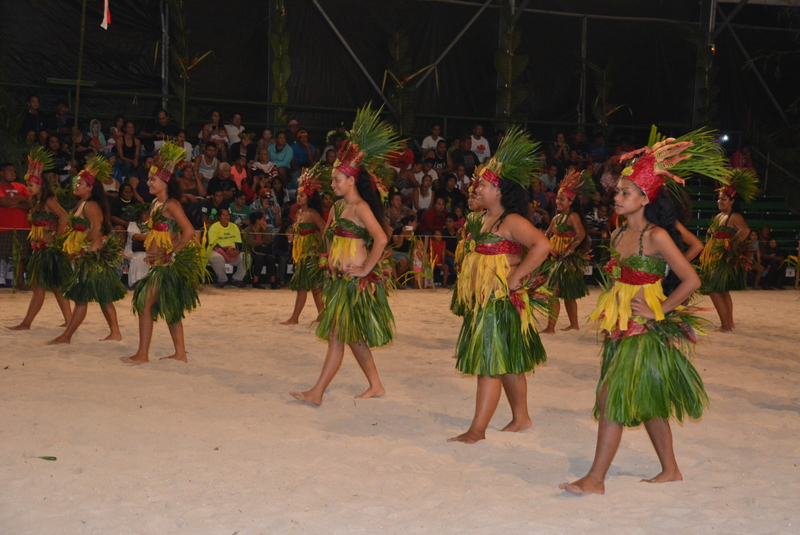- Boat
- Articles
- About
- Tehani-li Logs
- 2004
- Uligan Maldives
- Man, Oh Man, Oman
- Eritrea: The Nicest Place You’ve Never Heard Of
- Cruising Notes: Oman to Eritrea – From Pirates to Cappucinos
- Old Testament Sudan
- Egypt: Legend, Myth and Reality
- Thoughts on Cruising the Red Sea
- Greece: Civilization Again
- Montenegro
- Malta
- Sardinia, Italy
- Barcelona, Spain
- 2003
- 2002
- 2001
- 2004
- Contact
Huahine: The Wild Island
ISLV: Isles Sous Le Vent, or the unromantic sounding “Leeward Islands” in English (pronounced lew-wards), are wonderful places which can be found downwind from Tahiti. After enjoying beautiful Moorea we continued our tour of “the Leewards” with an overnight sail to Huahine, “The Wild Island.”
As we dropped the anchor in Huahine early in the morning, for the first time on this trip a local boat came by and sold us lobsters they had just caught on the reef. The family was full of smiles and seemed happy whether we bought their lobsters or not.
The crew is taking a greater than usual interest in dinner.
Huahine was the most peaceful and bucolic of all the islands we visited and hardly lived up to its “wild” moniker. Everything there was mellow: the people, the warm inviting waters, the little beach town of Fare and even the landscape was gentler and much more toned down than the islands boasting dramatic volcanic peaks we had previously visited.
We were about to get hit by a forecast “Mara’amu,” or what meteorologists snug in their cubicles while they take another bite of a sandwich casually refer to as “reinforced trades.” Winds were to pick up to 30 knots or more and the on and off gentle rain would become horizontal and persistent. The anchorage at Fare is rather exposed so we headed south on the inside of the protective reef that surrounds Huahine to find shelter.
A French family of sailors we met earlier in Papeete had kindly invited us to take a mooring ball in front of their house where they lived in Huahine. And they had wifi. Off we went to a large bay called Port Bourayne with 360 degree protection. I normally avoid moorings because I don’t know what is down there nor when it was last checked. But given they had their boat on another mooring, were sailors themselves and checked the equipment annually, we went for it. This was the very first time we had ever taken a mooring as we prefer to anchor. A good anchor is cheap insurance and allows me to sleep with both eyes closed.
Four delightful days of rain and wind later we moved off the mooring and found our way down to beautiful Avea Bay, at the bottom of the island. Here we found a protected anchorage in normal trade wind conditions with a gorgeous reef and shallow warm water gently caressing a golden sand beach. I took Ariel and the girls to the resort on the beach (Relais Mahana) for a $91 lunch. Ariel enjoyed it. I am still hurting.
We snorkeled every day. We rode the dinghy out to the shallow part of the bay where the depths rise up steeply from a deep blue in 45 feet of water to swimming pool pale blue and soft white sand in five feet of water. Jumping into the shallow water we were amazed to see millions of sea slugs scattered everywhere on the blinding white sand like shrapnel from some massive creepy crawly explosion. The water was as clear as non-Hong Kong air and looking ahead visibility reached over a hundred feet. Below is Adriana doing her “spacewalk” impression.
Asmara spent some time learning to sail with Claudia, another nine-year old, off the Australian boat “Seabbatical.” The girls were going so fast smoke started coming out of the mast.
We paid for possibly the world’s smallest rental car and went for a drive around the island.
The girls played at a beach while we watched from a café right above them. Adriana got out of the water and came over to me. We enjoy speaking pig latin to each other from time to time. I gave her a big hug and said, “Iyay Ovelay Ouyay.” Without hesitation she threw her little arms around my neck, squeezed me tight and replied, “Eemay Ootay!” (“I love you,” and “Me too,” for those who never had pig latin drilled into them at Catholic school).
Cruising dads hard at work:
July is “heiva,” the Polynesian cultural festival that coincides with the French Bastille Day. Most nights for an entire month there are traditional competitions involving feats of strength, fishing, weaving, singing and, of course, dancing. Dancers from the islands around Tahiti are renowned across the Pacific as being the best of the very best and we were fortunate enough indeed to be here to watch.
An important note should be made which adds to the charm of the whole event. People on the islands of French Polynesia, from the Marquesas 800 miles away in the far west, to the Tuamotus to Tahiti and the Isles Sous Le Vent, all take enormous pride in their culture and history. They all recognize that while their islands are now a part of France they were independent kingdoms founded by the fiercest of warriors and finest of navigators mankind has produced. The annual competitions, all in traditional dress, are a communal recognition of identity and are purely for themselves, not for us tourists.
Each and every town, almost all agriculturally based, put together a dance team and a singing team. We saw small towns on the backside of the islands which just grow pineapples for a living field teams of 50 serious dancers. The towns compete against each other and the winner of each island goes to Tahiti for the final competition. Not all the dancers are the svelte, willowy women of South Pacific lore flattering you with demure “come hither” glances. These are real people taking real pride in who they are and it is fantastic and a privilege to see.

